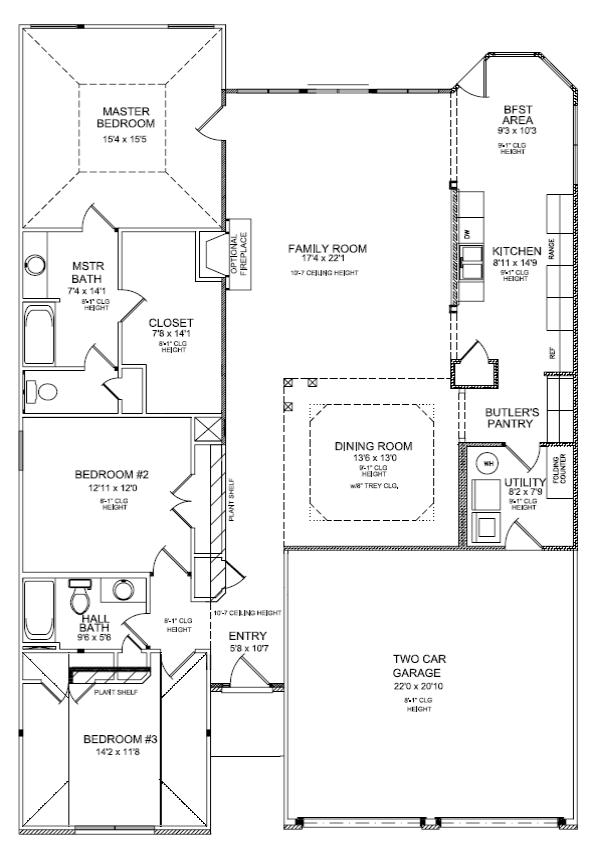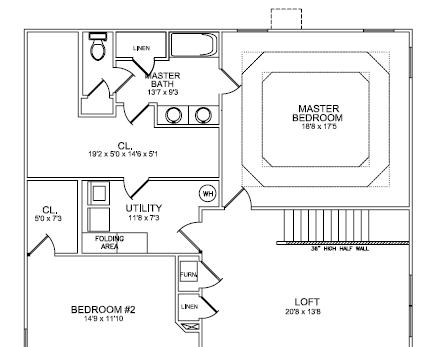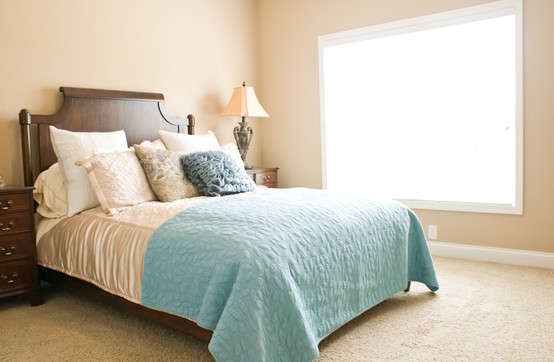Thursday, December 27, 2012
The floor plan is the heart of constructional drawings. From the type of house to the size of the house, a floor plan reveals area, structure, stair location, door and window locations, room layout and so much more. Floor plans can be confusing at first glance, so here are a few pointers to help you understand what you’re seeing.
For starters, look at the floor plan as a whole. The floor plan is drawn from a perspective view, which means that it’s as if the roof has been lifted off and you’re looking down into the house from a bird’s eye view.
Next, locate the front entrance to the house. Visualize opening the front door and walking through the house. Follow the flow down the halls and walk spaces. Go to each room on the floor plan. The living area, kitchen, dining area, bathrooms and bedrooms are all marked, as well as any special rooms such as the utility room or office, like this example shown of the Manhattan Expanded floor plan. Below the room label is the room dimensions. It is listed in feet and inches with the width first and the length second.

Doors and windows are two of the most important elements shown on a floor plan. Each door and window is given a location and size. Windows are shown with three parallel lines in a wall and doors are typically shown as a straight line perpendicular to a wall and an arc that connects this line to the wall. The great thing about showing a door like this is that you’ll know which side has the hinges and which room the door opens into. This is good to keep in mind as you think about furniture placement.
The next thing to look for is ceiling height. Some plans will have the ceiling dimensions on the plan itself, underneath the room dimensions. Other plans will have symbols on them. For example, in the Cavanaugh II floor plan, the master bedroom has a double trey ceiling marked with two squares of dotted lines. Other plans, like the Monroe plan, have vaulted ceilings marked by crossed dotted lines.

Wednesday, December 19, 2012
The holidays are a time for friends and family to get together, which means schedules can fill up quickly with overnight guests in your Ball home. Take a few hours to prepare for your visitors and create an environment that tells them, “I’m glad you’re here”.

First, you’ll want to look around the room that they’ll be staying in. Try to de-clutter the room as much as possible. You’ll want to ensure that your guests have enough room to relax without having to step over paperwork or boxes. Clear off the dresser top and provide a tray or dish where your guests can put their jewelry, change and other small items. Clear some space in the closet for their hanging items and don’t forget to leave a few extra hangers.
Do you have a guest bed they will be sleeping on? Make sure the bed is as comfortable as it can be. If you’re using an inflatable mattress, pump it up and check for any leaks. You don’t want to find that you have a busted air mattress just as your guests are turning in for the night. Run the pillows through the air-only cycle on your dryer with a fabric softener sheet to give them a fresh scent. If you’re using new bed linens or towels, run them through a laundry cycle to keep them from feeling stiff.
Next, check the guest bathroom to make sure everything is cleaned and organized. Restock the toilet paper and tissues, if necessary. Set out fresh towels for each of your guests. If you have time, assemble a small basket of toiletries, just in case your guest has forgotten something. You can find travel sizes of many items like shampoo, soap, razor, toothbrushes, toothpaste, and lotions at the local store.This makes your guest feel welcome, takes away any awkwardness they may feel in asking you for something they need or forgot, and makes it easier on you to have everything prepared.
Do you have any other tips or tricks you do to ensure your guests are comfortable? Share them with us on our Facebook page!
Friday, November 2, 2012

After you’ve moved in to your new Ball home, make sure your kitchen remains organized and clutter-free with these quick tips!
-
Organize your kitchen cabinets by placing items you’ll use the most on the lower shelves and the things you’ll use least on the higher shelves.
-
Store small appliances like a coffee grinder, handheld electric mixer, and toaster, inside a cabinet on a large lazy Susan. You’ll be able to keep the large, bulky items hidden, but still within reach when you need them.
-
Use your new glass-front cabinets to showcase your good china, antique bowls, or even canisters filled with pasta.
-
Create a cooking zone around the stove, storing pots and pans as close to the range as possible. Stow essential tools together within easy reach of your cooking zone for efficient food prep.
-
Utilize your interior cabinet doors. Line a door with cut-to-fit sheets of cork to create a message center, or attach a magnetic board to the inside of a door.
-
Set aside one drawer for junk. Most organization experts agree that you can and should have a junk drawer for all the little odds-and-ends things around the house. Use drawer dividers to keep it organized and make sure you go through it at least once every few months to throw away the things you really don’t use.
Do you have any other kitchen organization tips? Let us know on our Facebook page!
-
Organize your pantry shelves as you would a library, with food items grouped by category. Save space by storing bulky food items in coordinating containers.
-
Line the base of your cabinets with a waterproof mat. You’ll be able to easily wipe up spills, leaks, or crumbs while protecting your cabinets.
Do you have any other kitchen organization tips? Share them with us on our Facebook page!